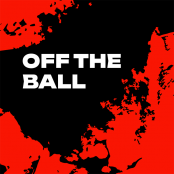Underrated, relatively cynicism-free and fast-moving: if the key stakeholders around Dublin’s camp are to be believed, ladies’ football is at an all time high, and one that’s arrived at speed.
Dublin manager Gregory McGonigle has been around the game for a while, having made his way to the capital via a spell in charge of a successful Monaghan panel. His short-term progress markers are stark.
"If somebody had said to me around the 2011 final, when I was at Monaghan, that we'd have Dublin operating in terms of stats, food nutrition and monitoring of sleep, I’d have found it hard to believe,” he explained.
“Back then you'd train two or three times a week, and then go back to your club. Now we're training four or five times and getting in our recovery sessions. We copy trends that are out there, and we look to see what the men's teams are doing, as well as looking at the rugby set up. It's nearly professional, aside from expenses."
There are two players in the Dublin squad that can provide strong testimony on just how much the game has changed. Sinead Finnegan of Sword’s club Fingallians and Niamh McEvoy of local rivals St Sylvester’s, from Malahide, both grew up competing in boys' teams until well into their teens. There simply wasn’t an alternative.
Full-forward McEvoy explains “I was playing with the boys until I was 12, as there just weren’t enough girls interested. You can see by the attendance at Croke Park last year [around 31,000] how much bigger the game has become."
“I sometimes work with the nursery at St Sylvester’s, and there are 60 there on a Saturday morning. Sylvester’s are a medium-sized club, but it’s just not necessary to mix everyone together anymore. In fact, you have to separate them out because of the numbers involved.”

Image: Niamh McEvoy of Dublin with Ciara Hegarty of Donegal. ©INPHO/Tom Beary
Finnegan was still competing alongside the boys until 15, and appeared in a video last year called ‘You’re Good For A Girl’, in which she talks about the dynamic and difficulties around women’s sport.
Ahead of the final, she points to the influx of sponsorship from the likes of Lidl and AIG as key aspects of the recent progress. “I see first hand how the sponsors care about the women,” she argues. “It’s not just about having the name on the jersey as a token gesture. They really put the women front and centre with the men, and include us in the advertising. They’re creating role models for younger girls to see.”
Role models, most agree, are key. Captain Noelle Healy came out ahead of the final to say she’s “sick of” girls at Dublin bootcamps identifying Bernard Brogan as their hero, arguing “we want them to be saying Sinead Goldrick, or Lyndsey Davey.”
It’s tough to argue with the competitiveness of the game. There have been no late-stage championship thrashings this year; both Dublin and Cork reached the final by narrow margins. The club game in the capital is rapidly growing, with the top four club finals a few weeks ago settled one way or the other in second half injury time.

Image: Noelle Healy. ©INPHO/Gary Carr
Con Brennan, manager of Dublin club championship runners up St Brigid’s, argues for the county squad’s trickle down effect. “These girls are training 70-80 sessions a year,” he explains. “The attitudes of the Dublin players really rubs off on the squad. The team have taken on a mobility warm up that the Dublin girls use, for example, and some of the other players have incorporated that into their own personal training."
Pat Ring, in charge at their title-winning rivals Foxrock Cabinteely goes even further, arguing that the game’s development is not only good for those involved, but ripe for commercial involvement.
"I'd encourage sponsors to get in on the ground floor, because ladies' football is going to be huge. Lidl are the smart ones. The quality is outstanding, and it gets better every year. Once people come down they keep coming. It's a massive commercial opportunity, and sooner or later a lot of people are going to realise it."
For all the progress, though, women’s football has its issues. While Sunday’s final attendance is expected to surpass last year’s crowds - a turn out that made it the biggest ladies-only sporting event in Europe in 2015 - the semi-finals were played in front of attendances in the hundreds.
The age demographic is largely still extremely young; McEvoy, in her mid-20s, is considered one of Dublin’s senior players. Managers and players frequently mention grievances over scheduling and facilities. The latter relates in part to the separation of the GAA and the LGFA, and where that leaves the ladies in the pecking order, meaning they can be stuck with leftovers when it comes to facilities.
Regardless, the game is sending a message on the pitch. The final is widely expected to be top-class, and to lay down yet another marker of the progress the sport has made. Cork are looking for a sixth successive win - and an incredible 11th in 12 years - but most pundits have the two finalists very tightly matched.
"If you imagine Conor McGregor going into a third bout [with Nate Diaz]," McGonigle argues, "for me Dublin against Cork is as high a billing as that. I can't understand why anyone wouldn't want to go." We're yet to hear of any senators complaining that they can't get into the game, but perhaps the days of an All-Ireland Ladies' final ticketing fiasco aren’t so far away.
Download the brand new OffTheBall App in the Play Store & App Store right now! We've got you covered!
Subscribe to OffTheBall's YouTube channel for more videos, like us on Facebook or follow us on Twitter for the latest sporting news and content.








